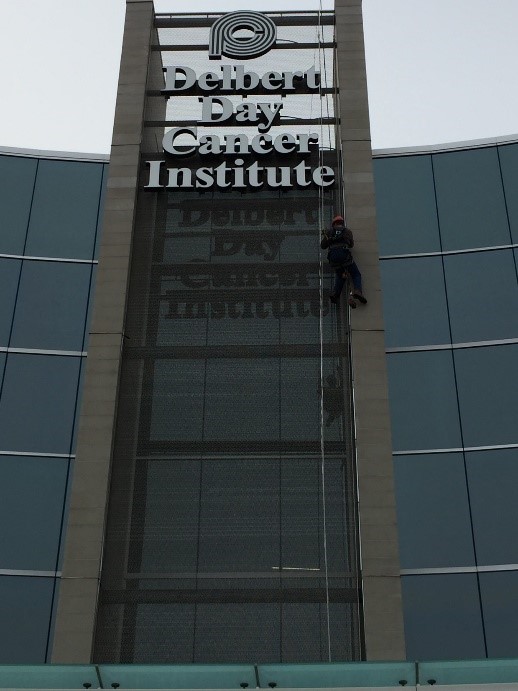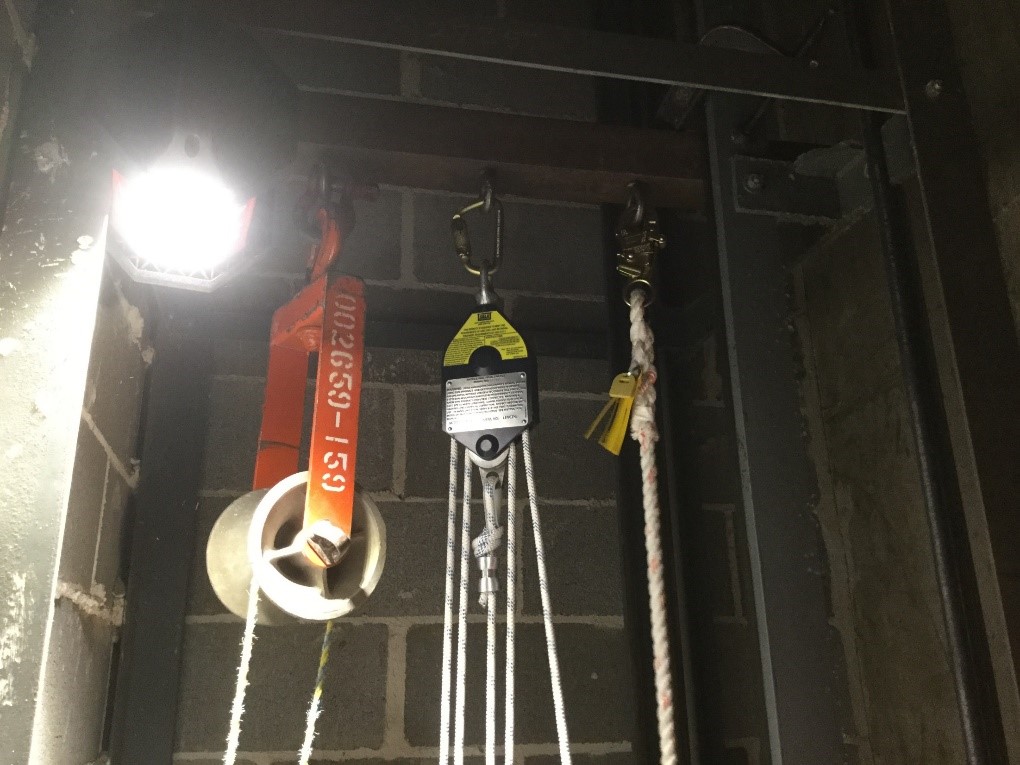Construction is an industry that has always depended on timing, whether it’s dealing with seasonal weather conditions, or simply finding a way to align hard-to-control external factors so that suitable means and methods and the right approach can achieve an appropriate outcome. The devil sometimes really is in the details.
Take the matter of lighting the façade of the recently completed Delbert Day Cancer Center, which is part of the Phelps County Medical Center in Rolla, Missouri. Here there had been a delay in implementation due to questions concerning the programmable LED system being deployed with its Traxon control system, coupled with challenges of safely managing the heights involved with installing the lighting system. The complexities were numerous, starting with the concave surface of the glass curtain wall, which affected precisely angling the two sets of fixtures (each nearly 50 feet long) so as to properly highlight the signage which was itself nearly ten feet removed from the surface of the building’s pristine, glass curtain wall.
First, there was no easy way to set a boom long enough to bring a “cherry picker,” etc. sufficiently close to the building at an angle practical enough to safely reach the lofty spaces in question. Let alone to wire and install the fixtures. Nor was there space on the driveway in front of the building to support such equipment, even if the breadth of the canopy above the entryway were sufficiently narrow to have enabled that approach. The alternative of putting scaffolding atop the canopy itself was structurally out of the question to say nothing of the risks to life and property.
As a consequence, the lighting installation became one of rigging a system for enabling  an electrician to lower himself from the rooftop with tools and lights tied-off and to work his way down the façade, installing the strips of LED lighting fixtures along the edge of the signage and the space below. The rigging involved using a technology that dates back to the days of tall ships, when mariners had to hoist themselves up and down tall masts using what was called a bosun’s chair with pulleys and ropes to safely hoist and suspend themselves and their tools to work at great heights. Now called a tower harness the equipment has evolved to incorporate significant improvements on its nautical ancestor—still, however, the basic principal remains the same. A main-pull and lifeline secures the worker and allows him to raise and lower himself, his tools as well as any equipment he has to install.
an electrician to lower himself from the rooftop with tools and lights tied-off and to work his way down the façade, installing the strips of LED lighting fixtures along the edge of the signage and the space below. The rigging involved using a technology that dates back to the days of tall ships, when mariners had to hoist themselves up and down tall masts using what was called a bosun’s chair with pulleys and ropes to safely hoist and suspend themselves and their tools to work at great heights. Now called a tower harness the equipment has evolved to incorporate significant improvements on its nautical ancestor—still, however, the basic principal remains the same. A main-pull and lifeline secures the worker and allows him to raise and lower himself, his tools as well as any equipment he has to install.
In the end, old-fashion rigging and muscle-power enabled a successful and safe installation of the two rows of lights, designed to illuminate Delbert Day’s façade and  signage. Affixed to secure anchors set into the rooftop, Guarantee’s electricians deployed specially coated cables to minimize any risk of damaging the façade. They were then able to connect and install two rows of LED lights (one on each side of the wall framing the corporate sign as well as the specially designed reflective matrix used to accentuate lighting effects. The programmable LED system itself provides almost unlimited choices of color for the Cancer Center’s staff to use in celebrating holidays, for example. The system also serves in particular to offer every patient a small but colorful celebration upon release and successful treatments.
signage. Affixed to secure anchors set into the rooftop, Guarantee’s electricians deployed specially coated cables to minimize any risk of damaging the façade. They were then able to connect and install two rows of LED lights (one on each side of the wall framing the corporate sign as well as the specially designed reflective matrix used to accentuate lighting effects. The programmable LED system itself provides almost unlimited choices of color for the Cancer Center’s staff to use in celebrating holidays, for example. The system also serves in particular to offer every patient a small but colorful celebration upon release and successful treatments.